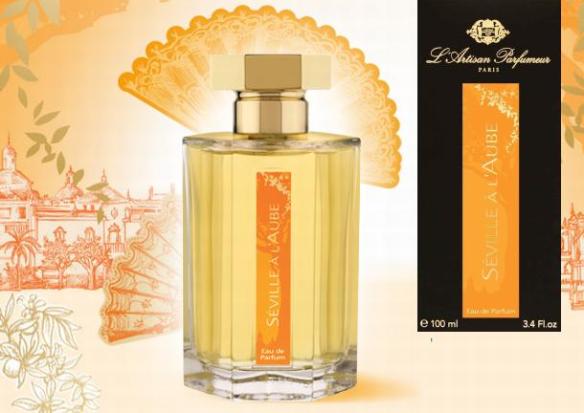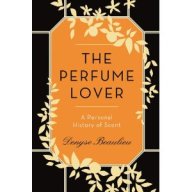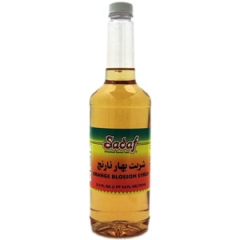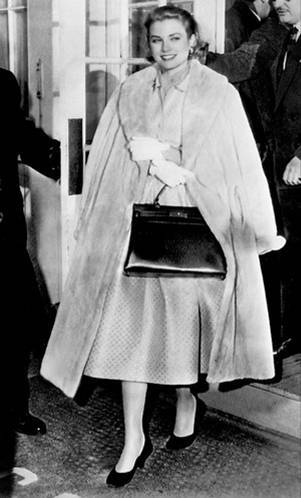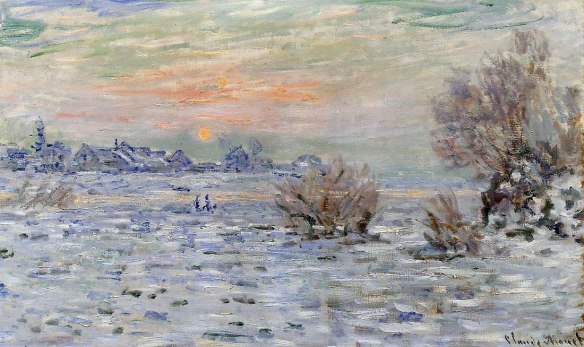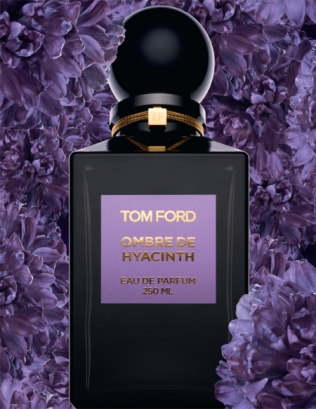There are perfumes that one should theoretically love but which, in reality, one simply cannot bear. Seville à L’Aube (Seville at Dawn) is one of those fragrances for me. A perfume that has sent the blogosphere into an utter tizzy, accompanied by a book of seemingly great sexiness, and a back-story of even greater romanticism, it is centered on one of my favorite notes: orange blossom. It is a perfume that would seem to be tailor-made for me. Ultimately, however, I couldn’t stand it. My personal perfume profile — and a particular note that I always struggle with — made Seville à L’Aube a very difficult experience for me.
Seville à L’Aube is a limited-edition eau de parfum released in 2012 and made for L’Artisan Parfumeur by the great Bertrand Duchaufour in conjunction with the writer and perfume blogger, Denyse Beaulieu of Grain de Musc. According to a quote from Ms. Beaulieu on Now Smell This, the perfume is supposed to represent one night in Seville and the start of a passionate affair between Ms. Beaulieu and her Spanish lover:
[Séville à l’aube] was inspired by one of the most beautiful nights in my life, in Seville during the Holy Week under an orange tree in full blossom, wrapped in incense smoke and the arms of a Spanish boy…
Fragrantica provides even more details on Ms. Beaulieu’s encounter:
I am in Seville, standing under a bitter orange tree in full bloom in the arms of Román, the black-clad Spanish boy who is not yet my lover. Since sundown, we’ve been watching the religious brotherhoods in their pointed caps and habits thread their way across the old Moorish town in the wake of gilded wood floats bearing statues of Christ and the Virgin Mary. […]
[The statue of the Madonna] is being carried into the golden whorls of a baroque chapel, smoothly manoeuvred in and out, in and out, in and out – they say the bearers get erections as they do this – while Román’s hand runs down my black lace shift and up my thigh to tangle with my garter-belt straps. […] I am in the pulsing, molten-gold heart of Seville, thrust into her fragrant flesh, and there is no need for Román to take me to bed at dawn: he’s already given me the night.
Bravo! If the story doesn’t leave one heated and intent on trying the perfumed encapsulation of that night, then I have no idea what will. I certainly was keen to test the perfume, and the blogosphere’s gushing, often poetic reviews only strengthening that determination.
Things seemed to have reached a crescendo this week with the U.S. release of Ms. Beaulieu’s book, The Perfume Lover: A Personal History of Scent, which describes, in part, the process of creating Seville à L’Aube with Mr. Duchaufour. (Apparently, the book also covers quite a bit of Ms. Beaulieu’s sex life, according to an article in The New York Times yesterday.)
I wasn’t aware that the book’s release was this exact week (and I hadn’t intended to cover the perfume until next week), but I have been feeling unwell lately, so I thought my beloved orange blossoms would be the perfect antidote and pick-me-up. It wasn’t until I read the perfume’s notes that a flicker of worry crossed my mind. The notes as compiled from Lucky Scent and Now Smell This include:
Orange blossom, lavender, pink pepper, petitgrain, lemon tree leaves, jasmine, magnolia, beeswax, incense, Benzoin Siam, Luiseiri lavender.
 You see, I really do not like lavender very much. I really, really do not. And Seville à L’Aube opens on my skin with a veritable tidal wave of dry, pungent, concentrated lavender, followed by bitter petitgrain and overwrought orange blossoms. I can tolerate lavender in small doses, but this degree of super-concentrated, intense lavender was well-nigh unbearable for me. It was akin to the most concentrated lavender oil, but with a particularly bitter, pungent, dry character. When combined with the equally bitter petitgrain (the distillation of the twigs from an orange blossom tree) and some incredibly peppery notes, the overall result passes into forcefully unpleasant territory.
You see, I really do not like lavender very much. I really, really do not. And Seville à L’Aube opens on my skin with a veritable tidal wave of dry, pungent, concentrated lavender, followed by bitter petitgrain and overwrought orange blossoms. I can tolerate lavender in small doses, but this degree of super-concentrated, intense lavender was well-nigh unbearable for me. It was akin to the most concentrated lavender oil, but with a particularly bitter, pungent, dry character. When combined with the equally bitter petitgrain (the distillation of the twigs from an orange blossom tree) and some incredibly peppery notes, the overall result passes into forcefully unpleasant territory.
The orange blossoms weren’t my salvation, either. Sometimes, orange blossoms can impart a faintly soapy undertone but — though there was just a hint of that here in the opening moments — the real issue for me was the impact of the other notes. They turned the orange blossom into something extremely dry with a definitely pungent, woody, almost herbaceous, peppery twist. There is some relief from the sweet magnolia flower which adds a soft, velvety, plush floral note with some fruity nuances — but not much. At this stage, it is predominantly lavender, bitterness, dryness, more lavender, and orange blossom.
Fifteen minutes later, the overpowering lavender has started to meld a little better with the orange blossom. The notes turn into one spicy-sweet accord with some pungent green notes, but it’s still an ordeal and I still struggle. As time passes, the lavender starts to recede a little, the orange blossom takes the lead and the perfume turns much sweeter.
Except now, it is too sweet. Revoltingly so. I’m having strong flashbacks to Tom Ford‘s Neroli Portofino which I found to be a similarly excessive, cloyingly sweet, orange blossom scent. It’s as though the flower has been put on steroids, in both perfumes. And, frankly, there is something very unnatural and artificial about the extremeness. I am strongly reminded of the thick, concentrated orange blossom syrup used in Middle Eastern desserts — but amped up with aromachemicals. Just as with Neroli Portofino, Seville à L’Aube makes me feel physically queasy. (Perhaps I can’t handle perfumes that are essentially orange blossom soliflores?)
My intense queasiness and nausea continue for quite a long time, leaving me wondering if I shouldn’t just save myself and scrub this off. To be honest, the first time I tried Seville à L’Aube, I completely gave up but, since I had an appointment I couldn’t miss at the vet, I simply sprayed another perfume over it to be free of it.
The second time, however, I persevered and, around the 2.5 hour benchmark, the perfume finally became less of an ordeal. That unnatural, extreme and painfully cloying sweetness starts to slowly dissipate. Somewhat. The lavender has — thank God — retreated for the most part, to be replaced by a quiet note of beeswax and vanilla benzoin. Soft touches of jasmine lurk behind the orange blossom and there is also the advent of a subtly smoky base, though the incense is never more than a faint shimmer in the background. From the start, the perfume has always been incredibly airy and lightweight in feel, though also surprisingly strong and powerful. Now, near the 3 hour mark, it finally drops in sillage and power. It is still, however, far too sweet for my liking.
For the next seven hours, the perfume is predominantly orange blossom with some light vanillic benzoin. It’s an incredibly persistent, long-lasting scent. It’s not completely terrible; there are times when I even think I may like it. Then I remember that brutal opening — and shiver. I could never go through that again, but I fully recognise that my reaction is due to my own personal discomfort with some notes. That said, I really do think that the perfume is overly sweet by more than just my standards. I made two people sniff my arm, and both thought the same thing with one actually recoiling in aversion.
We’re not alone in that conclusion, though we are in the minority. Bloggers may generally (with some exceptions) adore Seville à L’Aube, but the reaction from general commentators is distinctly more mixed. On Fragrantica, a number of people mention the “cloying” nature of the perfume or how it is “a little nauseating.” (See, it’s not just me!) On Luckyscent, some of the reviews are equally unenthused:
- urgh, not sure how I feel about this. Lots of orange blossom. Gives an impression of orange and green. It’s somehow too much, has a weird gourmand quality, like a big too-sweet meringue covered in candied flowers and orange leaves. Also a tiny trace of celery.
- I so eagerly awaited a decant, only to discover this smells uncannily like Fruity Pebbles. The opening (as much as I could ascertain with my sample) is smoky and sexy with the sweetness of orange blossom but the dry down is straight Fruity Pebbles. I was really hoping for smoky holy days and my garters getting tangled.
- I get a lot if benzoin in this one, and the same rooty, astringent carrot from Nuit de Tubereuse. The orange blossom note has a burned sugariness to it, so that it isn’t airy, but syrupy. Definitely a fall perfume.
- The opening is a lively orange blossom composition with some unusual notes. But that lasts only a few minutes. The drydown is a sweet, fairly generic orange blossom cologne. It’s gone completely in 45 minutes on my skin, according to my housemates. There is one note in common with Nuit de Tubereuse that actually sears my nose briefly. No idea what the aromachemical is, but it can be a bit painful.
Oddly, there are a number of comparisons on the Luckyscent reviews to Nuit de Tubereuse which is also from Bertrand Duchaufour and L’Artisan Parfumeur. I couldn’t stand that one, truth be told, but I can’t see the similarities unless it’s in the area of unpleasant aromachemicals. I think Seville à L’Aube is a much better scent, relatively speaking — though given my feelings about Nuit de Tubereuse, I’m not sure that’s saying much.
I should also add that I know others who do not have issues with lavender but who, nonetheless, struggled with Seville à L’Aube. Some found it painfully dry at the start. A few found it “sour,” like my friend and fellow perfume blogger, The Scented Hound, who also described the perfume as “a cross between floor cleaner and sour shampoo,” and called it “purgatory.” One blogger, Almost au Naturel, suffered entirely different notes, summing up the scent as “funky, sexed up baby powder.” Though she ended up appreciating Seville à L’Aube for what it was, she begged people not to fall for the hype.
I definitely agree with that last conclusion. Don’t let the hype lead you to unrealistic expectations. If you love lavender, orange blossom and very sweet perfumes, then Seville à L’Aube may be one for you to consider. (However, the perfume is limited-edition and, with the advent of the U.S. edition of the book, it is even hotter than it was before, so I suggest you test it out very soon if you want to try to obtain a bottle.) For those who are less than enamoured of those notes, however, it may be “purgatory” and you might want to stick with reading the book.


